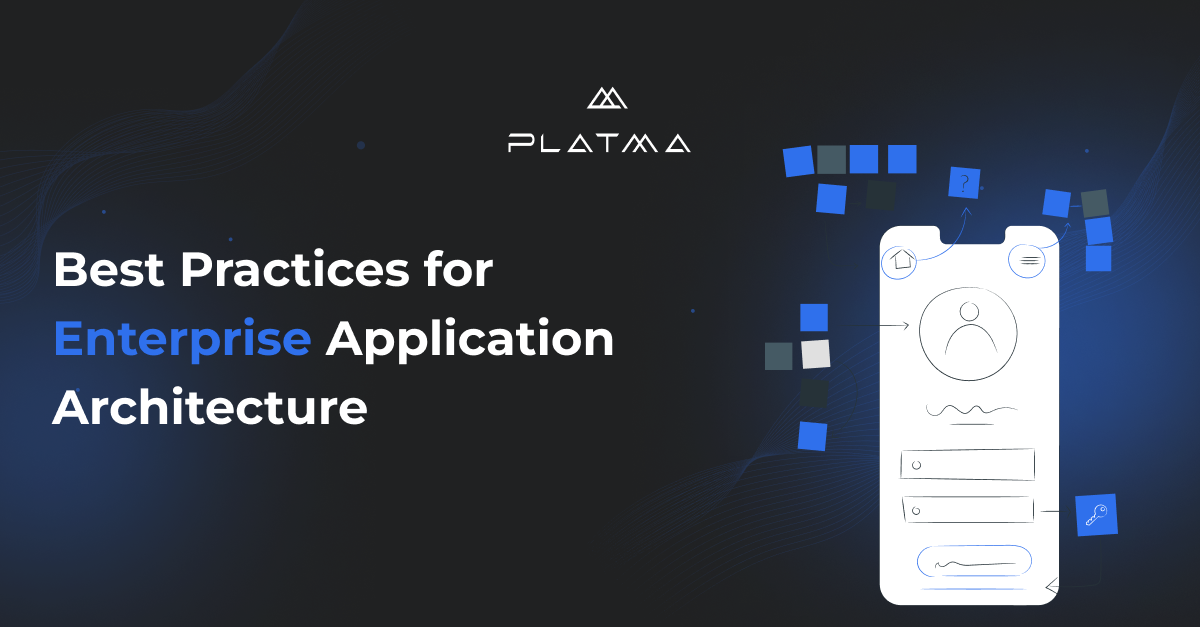In today’s fast-paced digital landscape, enterprises face the constant challenge of developing and maintaining robust and scalable applications to drive their business growth. Traditional software development approaches often involve complex coding, time-consuming processes, and limited flexibility. This is where low-code development platforms like Platma come to the forefront, empowering organizations to accelerate application development and meet evolving business needs efficiently. In this article, we will explore the best practices for enterprise application architecture using the powerful capabilities of Platma.
Define Clear Goals and Requirements
Before diving into application development, it’s crucial to define clear goals and requirements. Identify the specific business problems you aim to solve and outline the desired outcomes. Engage stakeholders, end-users, and developers to gather comprehensive requirements, ensuring alignment and clarity from the outset.
Leverage Modular Architecture
One of the key advantages of Platma is its ability to support modular architecture. Break down the application into smaller, reusable components, such as microservices or widgets, which can be easily integrated and updated independently. Modular architecture enhances maintainability, reusability, and scalability, enabling teams to build and modify applications efficiently.
Design User-Centric Experiences
Focus on delivering exceptional user experiences (UX) by incorporating user-centered design principles. Platma offers a range of pre-built templates, UI components, and design tools to streamline the UX design process. Engage users early in the design phase through prototypes and feedback loops, ensuring the final application aligns with their needs and preferences.
Implement Security Measures
Enterprise applications often handle sensitive data and transactions. Implement robust security measures to protect against unauthorized access and data breaches. Platma provides built-in security features, such as role-based access control, data encryption, and secure authentication mechanisms. Leverage these capabilities to ensure compliance with industry standards and regulations.
Optimize Performance and Scalability
Efficient performance and scalability are vital for enterprise applications, especially as user bases and data volumes grow. Platma optimizes application performance by automatically handling back-end infrastructure, caching mechanisms, and load balancing. However, it’s important to monitor and fine-tune performance regularly to address any bottlenecks and ensure a seamless user experience.
Enable Integration with Existing Systems
Enterprises often have a complex IT landscape with numerous legacy systems and databases. Platma offers robust integration capabilities, allowing seamless connectivity with existing systems through APIs, web services, and connectors. Leverage these integration features to enhance data flow, streamline business processes, and avoid data silos.
Implement Version Control and Collaboration
To maintain transparency, control changes, and foster collaboration, implement version control and collaboration tools. Platma offers built-in version control features, enabling teams to track and manage changes efficiently. Additionally, leverage collaboration features, such as real-time commenting and task assignment, to streamline communication and enhance productivity.
Continuous Testing and Quality Assurance
Ensure rigorous testing and quality assurance processes throughout the application development lifecycle. Platma supports automated testing frameworks, making it easier to perform unit testing, integration testing, and regression testing. Embrace continuous integration and continuous delivery (CI/CD) practices to automate build, test, and deployment processes, ensuring consistent quality and faster time to market.
Foster Agile Development Practices
Adopt agile development methodologies, such as Scrum or Kanban, to promote iterative development and collaboration. Platma’s low-code environment enables rapid prototyping, quick feedback loops, and faster iterations. Embrace agile practices to respond to changing requirements, deliver incremental value, and continuously improve the application.
Monitor, Analyze, and Optimize
Post-deployment, monitor the application’s performance, user behavior, and feedback. Leverage analytics tools and dashboards provided by Platma to gain insights into application usage, identify potential bottlenecks, and proactively address issues. Continuous monitoring allows for ongoing optimization, ensuring the application evolves with changing business needs.
Platma’s low-code platform empowers enterprises to build robust, scalable applications with agility and efficiency. By following these best practices for enterprise application architecture, organizations can unlock the full potential of Platma, delivering user-centric experiences, driving innovation, and achieving digital transformation. Embrace the power of low-code development and revolutionize your enterprise application landscape with Platma.






